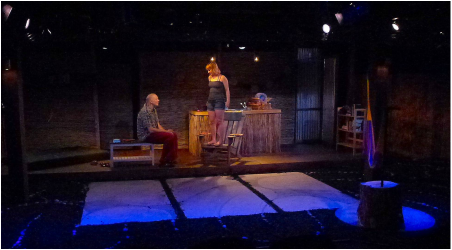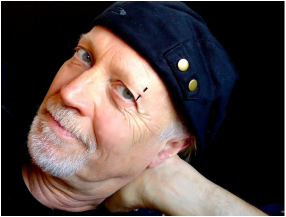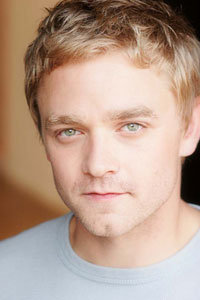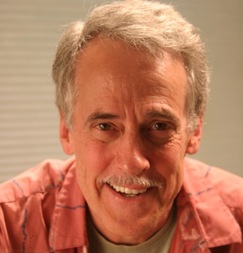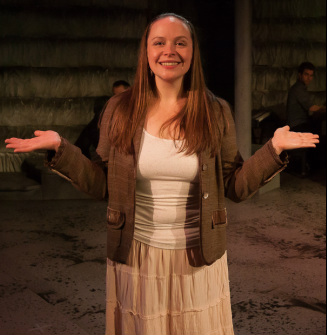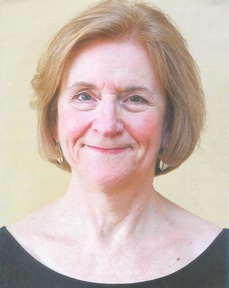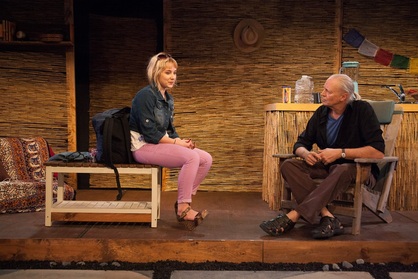 Gianna Kiehl, Paul Schnabel, and Becky's shoes. Lindsay Raymondjack Photography.
Gianna Kiehl, Paul Schnabel, and Becky's shoes. Lindsay Raymondjack Photography. In Slowgirl, one piece that stands out for me are Becky's wedges. Becky's shoes became a part of the costume design very early in the process, almost as soon as Robin and I started discussing what Becky should wear. We wanted her to start in a shoe that had the feel that she was dressed very impractically for her surroundings (who wears heels to the jungle?) and for her circumstances (who wears chunky platform shoes on a plane?). We also knew we wanted animal print somewhere on Becky's costume – our own little nod to the idea that she is the “wild animal” coming into Sterling's world – and the shoes seemed like a good place for it to be.
The actual shoes were a bit more difficult to find. I knew what I was looking for – something with animal print and a modern, fashionable, young profile. However, they also had to be relatively comfortable and something in which Becky could physically do everything she needed to do onstage (which included walking on loose surfaces, running, and even climbing over a chair). I scoured local stores and the internet for a shoe that would work perfectly. My search yielded many shoes – everything from booties to flip-flops, with and without animal print, in every heel height. The one that we liked the best after our initial fitting was the one that ended up onstage – metallic copper wedges in a very subtle snakeskin-like texture.
If you have seen the show, this may not sound like Becky's shoes – there is one major change I made to them before they went onstage: I added leopard print to the wedge portion of the shoe. All through the rehearsal period, we watched the shoes, trying to decide if the snake print was too subtle for our animal print idea. We went back and forth – we didn't want the animal to be too obvious, just to be something that we would know and that the odd audience member might notice. Finally, during one of our tech rehearsals, I tried out the leopard print on the heels just to see. As soon as we saw it, it had to happen. The leopard print was perfect. It was just enough animal print, and gave the shoes just that tiny bit of special and outgoing-ness they were missing. That night I added the leopard print and the next morning they paraded onstage into the world of Slowgirl as you see them on Becky's feet today.

